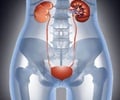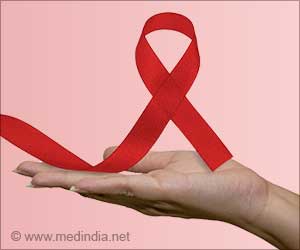New data are helping researchers understand the extent to which a certain protein – NGAL – can play a significant role in marking chronic kidney disease resulting from HIV.
New data collected at Columbia University Medical Center and by the Mount Sinai School of Medicine are helping researchers understand the extent to which a certain protein – NGAL – can play a significant role in marking chronic kidney disease resulting from HIV while at the same time distinguishing nephropathy from more common causes such as diabetes and hypertension.
It's well-known that Human Immunodeficiency Virus-associated nephropathy (HIVAN) is an important cause of kidney disease in HIV-infected patients. Antiretroviral therapy plays an important role in the treatment of HIVAN, yet despite advances in understanding HIVAN, current recommendations for treatment have largely been based on observational data and can only definitively made after a kidney biopsy.The current study, spearheaded by Columbia University's Jonathan Barasch, M.D., Ph.D., along with Ali Gharavi M.D., Ph.D., Neal Paragas M.S., Thomas Nickolas M.D., M.S., and Vivette D'Agati M.D., together with Paul Klotman, M.D., Christina Wyatt M.D., and Susan Morgello M.D., of the Mount Sinai School of Medicine and Landino Allegri in Parma, Italy, and Prasad Devarajan in Cincinnati Childrens Hospital, represents the examination of data from human cohorts in New York and Parma, and from mouse models created by Dr. Klotman.
The team noted that NGAL, or Neutrophil Gelatinase Associated Lipocalin, a protein they previously discovered in damaged kidneys, was prominently expressed in kidney tissue and in the urine of humans and in mouse models of HIVAN. The high levels of the urine protein were out of proportion to the degree of chronic renal failure, for example that typifies patients with other types of chronic glomerular diseases of both mice and humans. Most strikingly, Paragas, Barasch, and Gharavi noticed that the rise in urinary NGAL levels was in conjunction with the development of a specific type of lesion, namely tubular cysts that typify HIVAN. The association with these cysts consequently may justify their biopsy or an aggressive treatment with antiretroviral drugs when high levels of urine NGAL are discovered.
"From what we can tell, NGAL is unexpectedly expressed in great abundance by kidney cysts allowing the clinician to potentially identify HIVAN among other types of chronic kidney diseases and hopefully to intervene to prevent a kidney from ultimately dying from what physicians refer to as ESRD, or 'end-stage renal disease,'" Dr. Barasch says.
Dr. Barasch cautions that studying a much larger human cohort would be needed in order to determine the precise relationship of NGAL to HIVAN and whether the protein is a good enough predictor of tubular cysts, but he finds the results of the study unexpected and intriguing.
The research appears in an upcoming Journal of the American Society of Nephrology and was funded in part by the Emerald Foundation, the March of Dimes, the National Institutes of Health and the Glomerular Center of Columbia University.
Advertisement
Source-Eurekalert
SRM













